I would agree that the U.S. infantry is amongst the finest in the world but I am not certain that we are "dominant". Wars are won by people, not machines. We tend to rely on technology too much, particularly our armored vehicles, and this can make our forces vulnerable when that equipment fails or the enemy finds a way to defeat it. I have seen infantrymen humbled by a technologically disadvantaged adversary that understood how to use terrain to their advantage. This is not something that is unique to the infantry; this has also occurred to our most elite special operations forces.
Here are some training and technology gaps that I think could be addressed to help improve the lethality and survivability of the infantryman.
1. We have over burdened our infantrymen with layers and layers of PPE that make it difficult to maneuver quickly under fire. This problem is compounded in difficult terrain and weather conditions. This is the first thing I would like to see addressed with a technological solution. I would love to see industry come up with extremely light and flexible personal protective equipment. A set of Large SAPI plates weighs around 6 pounds. Another 2 pounds for side SAPIs. The USMC Modular Tactical Vest (which is ridiculously heavy) is 30 pounds. The Scalable Plate Carrier is 25. Add a 3 pound helmet to that mix and the average infantryman is walking around with 40 pounds of protective equipment without even factoring in the weight of ammunition and water. A five pound PPE weight reduction would have a significant effect on mobility. Could you imagine dropping 20 pounds? I'm sure someone could figure this problem out if they were sufficiently motivated ($$$).
2. I would love to see lighter and more effective individual radios. Imagine lightweight, encrypted, GPS enabled IPOD sized radio that would enable soldiers to communicate with each other and their HHQ, mark their position for battle tracking, and identify friend from foe when viewed through optics. It can be extremely challenging to determine the location of all your subordinate and adjacent units when you are under heavy fire, particularly in an urban environment. This delays the clearance of indirect and air delivered fires. Imagine a future operating environment where every combatant has individual GPS enabled battle tracking that can feed into the theater command and control systems used by every level of command post as well as aviation and artillery assets. Imagine if you could get a digital clearance of fires to back up human reporting on the ground. It would be great if every squad leader, platoon commander and JTAC had a light weight digital battle tracking display on this sleeve or maybe a tablet that could display the location of friendlies overlaid on a map or grid reference graphic. The latter may be a bridge too far because of present technology and cost but I bet apple could produce slick looking individual iBFT radios if they were motivated to do so ($$$$$$).
I understand that this could be a double edged sword if HHQ tried to jump on a team or squad net during a firefight. I've seen this a lot as it is already unfortunately.
3. I could train infantryman to shoot, move, communicate and medicate like SOF if I had the right amount of qualified instructors, ammunition, equipment, and facilities. There were huge gains in this department during the war but I have the feeling that infantry battalion budgets are going to get smaller than Rick Moranis in Honey I shrunk the Kids. Infantrymen don't need to have SOF skills but they would gain a lot from having regimental training detachments with a robust cadre of SOF veterans to run them through standardized marksmanship, communications and medical packages. I would also like to see higher quality professional military education at the E5/E6 and E7 ranks. It would be great if you could link these PME courses together somehow so that a soldier gets a bachelors degree in small wars/security studies by the time he finishes his E8 PME.
4. I would increase the minimum GT score and physical fitness standards for the infantry. The School of Infantry should look more like Ranger school than what it is now.
